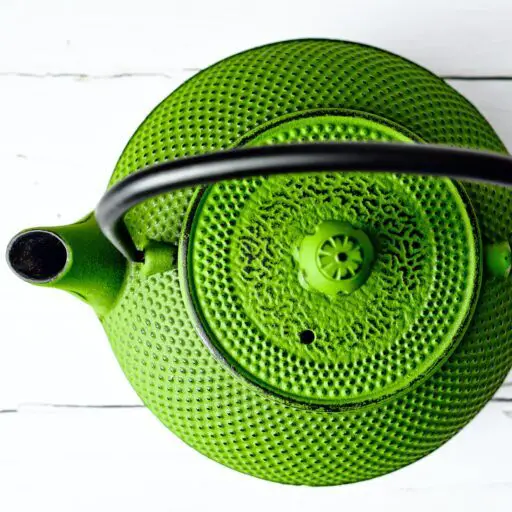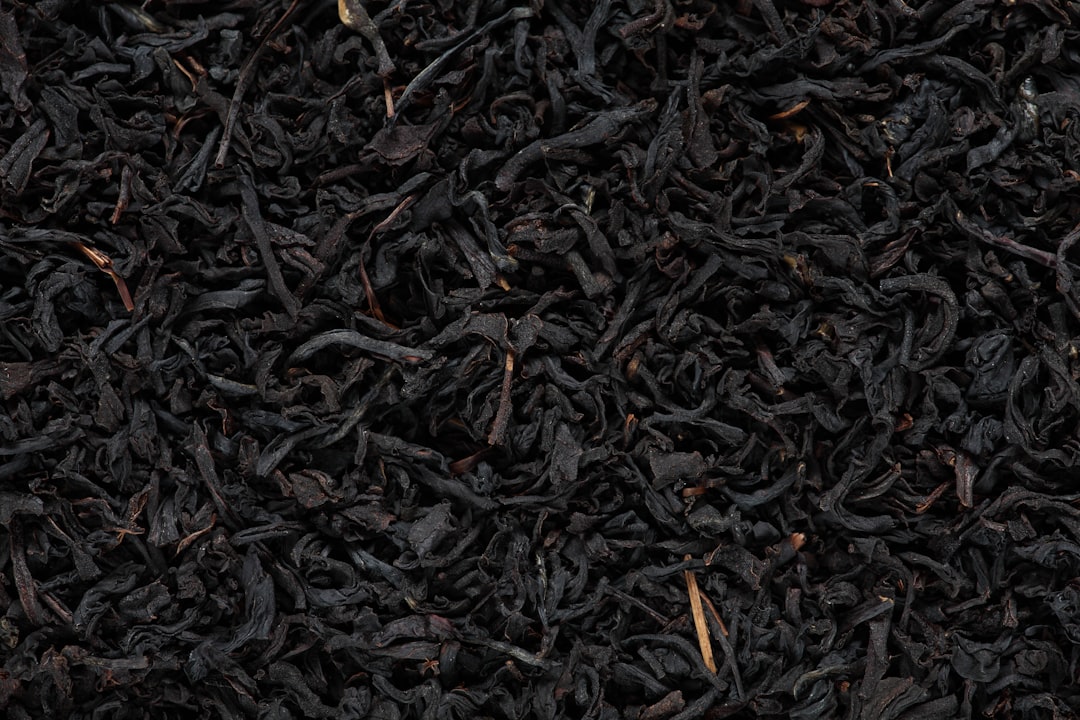Support our educational content for free when you purchase through links on our site. Learn more
What is the Most Popular Tea Type in 2023?
Table of Contents
- Quick Answer
- Quick Tips and Facts
- Is Tea an Allergen?
- Is Tea Vegan?
- Is Tea Good for You?
- And Now on to the World’s Most Famous Teas…
- FAQ
- Conclusion
- Recommended Links
- Reference Links
Quick Answer
The most popular tea type in 2023 is green tea. Green tea has gained widespread popularity due to its numerous health benefits, refreshing taste, and versatility. It is enjoyed by tea enthusiasts all over the world and is available in various forms, including loose leaf, tea bags, and matcha powder.
Quick Tips and Facts
- Green tea is made from the leaves of the Camellia sinensis plant.
- It is rich in antioxidants, which help protect the body against free radicals.
- Green tea is known for its potential health benefits, such as boosting metabolism, improving brain function, and reducing the risk of chronic diseases.
- There are different varieties of green tea, including Sencha, Matcha, and Gunpowder.
- To prepare green tea, steep the leaves in hot water for 1-3 minutes, depending on the desired strength.
- Green tea can be enjoyed hot or cold and can be infused with various flavors, such as lemon or mint.
Is Tea an Allergen?
Tea is generally not considered a common allergen. However, some individuals may have an allergic reaction to certain types of tea, especially if they are sensitive to plants in the Camellia family. Symptoms of a tea allergy may include itching, hives, swelling, or difficulty breathing. If you suspect you have a tea allergy, it is best to consult with a healthcare professional for proper diagnosis and guidance.
Is Tea Vegan?
Tea is naturally vegan as it is derived from plant sources. However, some flavored teas or blends may contain non-vegan ingredients, such as honey or milk. It is important to read the ingredient labels or check with the manufacturer to ensure that the tea is vegan-friendly. Additionally, some tea companies may conduct animal testing, so if you prefer to support cruelty-free brands, look for those that are certified as vegan and cruelty-free.
Is Tea Good for You?
Tea, including green tea, is generally considered good for you due to its potential health benefits. Here are some reasons why tea can be beneficial for your health:
-
Antioxidant-rich: Tea contains antioxidants called catechins, which help protect the body against cellular damage caused by free radicals.
-
Boosts metabolism: Green tea, in particular, has been shown to increase metabolism and promote weight loss.
-
Improves brain function: The caffeine and other compounds in tea can enhance brain function, improve focus, and increase alertness.
-
May reduce the risk of chronic diseases: Studies suggest that regular tea consumption may help reduce the risk of heart disease, certain types of cancer, and neurodegenerative diseases like Alzheimer’s and Parkinson’s.
-
Hydrating: Tea is a great way to stay hydrated, as it is mostly water and can contribute to your daily fluid intake.
While tea can have numerous health benefits, it is important to note that individual results may vary, and it is not a substitute for a balanced diet and a healthy lifestyle.
And Now on to the World’s Most Famous Teas…
Darjeeling
Darjeeling tea is a prized tea variety known for its delicate flavor and aroma. It is grown in the Darjeeling region of India and is often referred to as the “Champagne of teas.” Darjeeling tea is typically enjoyed without milk and has a light, floral taste. It is best brewed at a lower temperature for a shorter duration to preserve its delicate flavors.
Key Points:
- Flavor: Delicate, floral, muscatel notes.
- Caffeine Level: Moderate.
- Best Enjoyed: Without milk.
- Shop Darjeeling Tea on Amazon: Check price on Amazon
Chai
Chai is a popular tea blend originating from India. It is a spiced tea made by combining black tea with a mixture of aromatic spices such as cinnamon, cardamom, cloves, and ginger. Chai is typically enjoyed with milk and sweetened with sugar or honey. It has a warm and comforting flavor profile, making it a favorite choice for many tea lovers.
Key Points:
- Flavor: Spiced, warm, and aromatic.
- Caffeine Level: Moderate.
- Best Enjoyed: With milk and sweetener.
- Shop Chai Tea on Walmart: Check price on Walmart
Earl Grey
Earl Grey is a classic tea variety flavored with the oil of bergamot, a citrus fruit. It is named after Charles Grey, the 2nd Earl Grey, who was said to have received the recipe as a gift. Earl Grey tea has a distinct floral and citrusy flavor, which pairs well with or without milk. It is a popular choice for afternoon tea and is enjoyed by tea enthusiasts worldwide.
Key Points:
- Flavor: Citrusy, floral, and aromatic.
- Caffeine Level: Moderate.
- Best Enjoyed: With or without milk.
- Shop Earl Grey Tea on Etsy: Check price on Etsy
English Breakfast
English Breakfast tea is a robust and full-bodied black tea blend. It is typically a blend of Assam, Ceylon, and Kenyan teas, known for their rich flavors. English Breakfast tea is enjoyed with or without milk and is a popular choice for a hearty morning cup of tea. It provides a strong and invigorating flavor, making it a staple in many households.
Key Points:
- Flavor: Rich, robust, and malty.
- Caffeine Level: High.
- Best Enjoyed: With or without milk.
- Shop English Breakfast Tea on Amazon: Check price on Amazon
Green Tea
Green tea, as mentioned earlier, is the most popular tea type in 2023. It is known for its fresh and grassy flavor profile and is enjoyed by tea enthusiasts worldwide. Green tea is rich in antioxidants and is often associated with various health benefits. It can be enjoyed plain or infused with flavors like lemon or mint.
Key Points:
- Flavor: Fresh, grassy, and vegetal.
- Caffeine Level: Moderate.
- Best Enjoyed: Plain or with flavors like lemon or mint.
- Shop Green Tea on Walmart: Check price on Walmart
Matcha
Matcha is a powdered form of green tea that is traditionally used in Japanese tea ceremonies. It is made by grinding the whole tea leaves into a fine powder, resulting in a vibrant green color. Matcha has a rich and umami flavor, and it is known for its high concentration of antioxidants. It can be enjoyed as a traditional tea or used in various culinary creations.
Key Points:
- Flavor: Rich, umami, and slightly bitter.
- Caffeine Level: Moderate.
- Best Enjoyed: As a traditional tea or in culinary creations.
- Shop Matcha Tea on Etsy: Check price on Etsy
Oolong
Oolong tea is a partially oxidized tea that falls between green tea and black tea in terms of flavor and caffeine content. It is known for its complex and nuanced flavors, which can range from floral and fruity to toasty and earthy. Oolong tea is enjoyed by tea connoisseurs for its unique characteristics and is often steeped multiple times to fully appreciate its flavors.
Key Points:
- Flavor: Complex, floral, fruity, toasty, or earthy.
- Caffeine Level: Moderate.
- Best Enjoyed: Plain.
- Shop Oolong Tea on Amazon: Check price on Amazon
Ceylon
Ceylon tea is a black tea variety grown in Sri Lanka. It is known for its bright and brisk flavor profile, often described as a balance between fruity and citrusy notes. Ceylon tea is versatile and can be enjoyed with or without milk. It is a popular choice for iced tea and is widely available in both loose leaf and tea bag forms.
Key Points:
- Flavor: Bright, brisk, fruity, and citrusy.
- Caffeine Level: High.
- Best Enjoyed: With or without milk.
- Shop Ceylon Tea on Walmart: Check price on Walmart
White Tea
White tea is one of the least processed tea varieties, made from the young leaves and buds of the tea plant. It is known for its delicate and subtle flavors, often described as floral and sweet. White tea has a lower caffeine content compared to other tea types and is enjoyed for its light and refreshing taste. It is typically brewed at a lower temperature and for a shorter duration to preserve its delicate flavors.
Key Points:
- Flavor: Delicate, subtle, floral, and sweet.
- Caffeine Level: Low.
- Best Enjoyed: Plain.
- Shop White Tea on Etsy: Check price on Etsy
Turmeric
Turmeric tea, also known as golden milk or turmeric latte, is a herbal tea made by steeping turmeric root or powder in hot water. It is known for its vibrant yellow color and earthy flavor. Turmeric tea is often enjoyed for its potential health benefits, including its anti-inflammatory properties. It can be consumed plain or with added spices like ginger and cinnamon.
Key Points:
- Flavor: Earthy, slightly spicy, and aromatic.
- Caffeine Level: Caffeine-free.
- Best Enjoyed: Plain or with added spices.
- Shop Turmeric Tea on Amazon: Check price on Amazon
FAQ
What is the most popular tea blend?
The most popular tea blend depends on personal preference and cultural preferences. However, some popular tea blends include English Breakfast, Earl Grey, and Chai.
What are the top 10 best kinds of tea?
The top 10 best kinds of tea can vary depending on individual taste and preferences. However, some popular choices include:
- Green tea
- Black tea
- Oolong tea
- White tea
- Earl Grey tea
- Chamomile tea
- Peppermint tea
- Rooibos tea
- Matcha tea
- Herbal blends
Which type of tea tastes the best?
The taste of tea is subjective and can vary depending on personal preferences. Some people may prefer the bold and robust flavors of black tea, while others may enjoy the delicate and floral notes of green tea. Ultimately, the best-tasting tea is the one that you enjoy the most.
Conclusion
In conclusion, the most popular tea type in 2023 is green tea. Its refreshing taste, numerous health benefits, and versatility have made it a favorite among tea enthusiasts worldwide. However, there are many other famous teas, such as Darjeeling, Chai, Earl Grey, and English Breakfast, each with its own unique flavors and characteristics. The choice of tea ultimately comes down to personal preference, so feel free to explore different varieties and find the one that suits your taste buds. Cheers to a delightful tea journey!
Recommended Links
- Shop Green Tea on Amazon: Check price on Amazon
- Shop Darjeeling Tea on Amazon: Check price on Amazon
- Shop Chai Tea on Walmart: Check price on Walmart
- Shop Earl Grey Tea on Etsy: Check price on Etsy
- Shop English Breakfast Tea on Amazon: Check price on Amazon
- Shop Matcha Tea on Etsy: Check price on Etsy
- Shop Oolong Tea on Amazon: Check price on Amazon
- Shop Ceylon Tea on Walmart: Check price on Walmart
- Shop White Tea on Etsy: Check price on Etsy
- Shop Turmeric Tea on Amazon: Check price on Amazon
- Tea Brands™: Visit Tea Brands™
Reference Links
- https://www.healthline.com/nutrition/top-10-evidence-based-health-benefits-of-green-tea
- https://www.healthline.com/nutrition/black-tea-benefits
- https://www.healthline.com/nutrition/oolong-tea-benefits
- https://www.healthline.com/nutrition/white-tea-benefits
- https://www.healthline.com/nutrition/bergamot-tea
- https://www.healthline.com/nutrition/5-benefits-of-chamomile-tea
- https://www.healthline.com/nutrition/peppermint-tea
- https://www.healthline.com/nutrition/rooibos-tea-benefits
- https://www.healthline.com/nutrition/matcha-green-tea
- https://www.healthline.com/nutrition/10-herbal-teas



